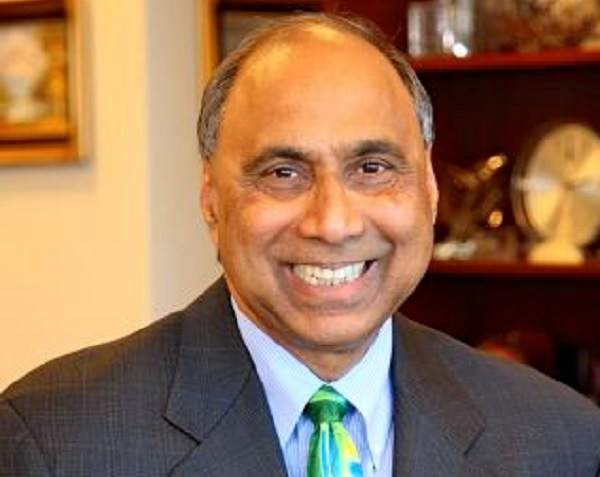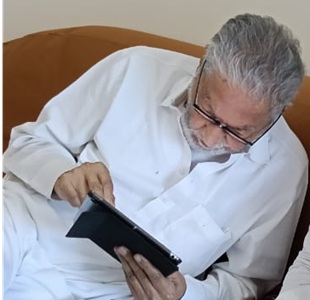FRANK F ISLAM
Public education is one of the primary pillars on which this American democracy was built during the 19th and 20th centuries. In this 21st century, especially over the past few years, public education has been pilloried.
The question becomes what is the future for public education in the U.S.? To determine that let’s examine its history, current status, and the challenges and opportunities for public education going forward.
Public Education Yesterday (https://files.eric.ed.gov/fulltext/ED606970.pdf)
There is no mention of education in the U.S. Constitution. The 10th amendment of the Constitution cedes all rights not granted to the federal government to the states. As a result, each state was and remains the principal determiner of public educational policy and practices in the United States. In spite of its decentralized origins, there are roots for public education dating back to the country’s founding.
Shortly after the American Revolution, Thomas Jefferson, John Adams, and other leaders proposed establishing “a formal and unified system of publicly funded schools.” In 1788, Noah Webster , possibly the foremost original advocate and activist in advancing the cause of an educated citizenry, declared “In our American republics, where (government) is in the hands of the people, knowledge should be universally diffused by means of public schools.”
The “common school reform movement” toward publicly funded or free schools for primary education did not, however, really begin to emerge in the United States until the 1830’s. It was initiated by Horace Mann, a Massachusetts legislator and secretary of the state board of education who called for the creation of public schools to be available to all children (i.e., white and male), free of charge and funded by the state. Because of Mann’s initiative, Massachusetts was the first state to adopt compulsory schooling for primary education. By 1918, all states had implemented some form of compulsory schooling.
This compulsory schooling was for the primary school years only. High school schooling lagged far behind and did not become commonplace until the 20th century. A mere 14% of Americans aged 25 and older had completed high school in 1910. By 1970, only 55% of Americans had degrees but that jumped to 90% by 2017.
The history of U.S. higher education movement in the U.S. stands in stark contrast to that of the high school movement. This is attributable to The Morrill Act. In the mid-19th century, higher education in the U.S. was provided by private colleges almost exclusively for the wealthy and elite. The Morrill Act called for establishing “land grant” colleges to make more advanced education available to the average American.
The Morrill Act was first passed by Congress in 1859, but not approved by President James Buchanan in part because it infringed on states’ rights. President Abraham Lincoln signed an updated version of the bill in 1862.
The 1862 bill granted 30,000 acres of public land to a state for each senator or representative in Congress. This meant that even the smallest state at that time got 90,000 acres of land, which the state could sell and use the proceeds for the endowment, support, and maintenance of at least one college.
The 1862 Morrill Act excluded benefits to states that had seceded from the union during the Civil War. In 1890, a second Morrill Act was passed, including a provision that race was not to be a school’s admission criteria or else to designate a separate land grant institution for persons of color. This led to the creation of a number of today’s historically black colleges and universities.
The Morrill Act drove the creation of the U.S. public higher education system. Today, the Association of Public and Land Grant Universities has more than 250 members, 79 are land grant institutions — 19 of which are historically black institutions.
This is a very brief overview of the history of public education in the U.S. It should be stressed that as public education in the U.S. grew through the centuries and decades it did not do so in a manner that provided equal opportunity for all.
Through the years, girls, minorities, immigrants, children with disabilities, those in low-income families, and other groups did not have access to public education. In the mid-20th century, this began to change due to decisions such as Brown v Board of Education and legislation, such the Elementary and Secondary Education Act of 1965 and the Individuals with Disabilities Act.
There has been progress made in making public education more inclusionary, but much remains to be done to ensure a quality public education for all. This was true at the beginning of this century due to the decentralized and multilayered nature of the public education “non-system” and the variability within and among states. It is truer today than ever, due to problems that have arisen for public education during these troubling and tumultuous times.
Public Education Today
The concerns at the top of the list for public education earlier in this century centered around academic concepts such as the value of common core standards for subjects such as math, science, and English and the adequacy of teacher preparation programs.
In 2022, because of the social, emotional and financial upheaval caused by the pandemic and the widening political rift among Americans, there are a set of new concerns coming to the top of the list.
They include but are not limited to: the teacher shortage; reduced enrollments in public schools; declining test scores; restrictions on academic freedom; and diminishing public support for public education.
In a piece that we posted in April, we labeled the teacher shortage as “critical”. In her Washington Post article, Hannah Natanson referred to it as “catastrophic.”
No matter what it is called, the shortage is extremely problematic for public education. There is no exact count on the size of the shortage across the country, but it is certainly in the tens of thousands.
What accounts for the shortage? Ms. Natanson reports that:
Experts point to a confluence of factors including pandemic-induced teacher exhaustion, low pay, and some educators’ sense that politicians and parents — and sometimes their own school board members — have little respect for their profession amid an escalating culture war that has seen many districts and states pass laws restricting what teachers can say about U.S. history, race, racism, gender, sexual orientation, as well as LGBTQ issues.
Just as there are fewer teachers for public school classrooms, there are far fewer students in these classrooms today. That’s not due to the absence of teachers, however.
Shawn Hubler reports in the New York Times that “America’s public schools have lost at least 1.2 million students since 2020.” Hubler ties this loss to the pandemic, and indicates that experts cite two potential causes: more well-off parents fed up with remote learning and mask mandates; and the economic consequences of job losses and homelessness for poorer families.
As attendance in public school classrooms plummeted during and due to the “pandemic years,” so did test scores. According to Sarah Swartz of Ed Week:
Long term trend data from the National Assessment of Educational Progress showed that 9-year-old students scored, on average, five points lower in reading and seven points lower in math in 2022 than did their pre-pandemic peers in 2020. The declines represent the largest drops in decades.
This corresponds with declines in the results of third graders on the nationally administered assessment i-Ready. Laura Meckler of the Washington Post reports that
In fall 2021, 38 percent of third graders were below grade level in reading compared with 31 percent historically. In math, 39 percent were below grade level, vs. 29 percent historically.
Public schools not only have lost teachers. Many of the teachers who have stayed in those schools have lost, too.
They have lost their academic freedom and been put into educational and informational strait jackets by those with influence and political power in some states, localities, school districts, and local schools. They are having their freedom of speech abridged. This is ironic because the perpetrators of this abridgement are very frequently the foremost advocates for and defenders of First Amendment rights.
The UCLA Institute for Democracy in Education and Access conducted a study in 2021, funded by the Spencer Foundation for Research in Education, in order “to understand the current context of extreme pressure on educators attempting to teach on issues of race/racism in our country and more generally to work on issues of diversity, equity, and inclusion in schools and districts so all students are supported as they learn.”
That study found that:
At least 894 school districts enrolling 17,743,850 students or 35% of all K-12 students in the United States, have been impacted by local anti “CRT” [Critical Race Theory] efforts.
Based upon those findings, the UCLA researchers stated:
Our survey and interviews demonstrate how such restriction efforts have been experienced inside schools as well as districts. We found that both state action and local activity have left many educators afraid to do their work.
Those are extremely problematic findings. Equally problematic are recent findings regarding the opinion of the general public regarding public schools.
Jon Valant addresses these findings and the future of public education in his excellent Brookings Brown Center Chalkboard blog “What if Americans sour on public education?” posted in late August of this year.
Valant draws upon recent surveys by EdNext and Gallup to highlight that members of one political party are “souring”.
EdNext in its 16th annual survey of public opinion asked respondents to assign a letter grade to “public schools in the nation as a whole.” Valant points out that in the years between 2016 and 2022 “there was relatively little change in the percentage of Democrats” giving “D” or “F” in response. But there was an “ominous spike in Republicans dissatisfaction” with 37% of Republicans giving a “D” or “F” in 2022.
The Gallup June 2022 poll found that only 13% of Republicans had “a great deal” or “quite a lot” of confidence in U.S. public schools. This compares to 43% of Democrats.
Public Education Tomorrow
If you put all these emerging trends together, they suggest an ominous future for public education in these United States. It is on a downward trajectory and there are numerous forces that could combine to increase the speed of that slide downhill and potentially make it irreversible nationally.
Jon Valant examines and analyzes the current context of public education, and the implications for its future, and states “I’ll admit to oversimplifying here, but the coming together of two groups of conservatives is especially worrisome to me.”
The first group Valant names are “Republican leaders who don’t seem to care much about education per se but see opportunities to use schools for political gain.” He continues “This group has no clear theory for educational improvement…. Let’s call this the DeSantis wing of today’s conservative education coalition.”
The second group Valant names are “…a group of conservative leaders that does seem to care about education but maybe doesn’t particularly care for public education. This group has a theory of school improvement. Most of all, they’re skeptical of government-run schooling …Let’s call this the DeVos wing of the conservative education coalition.”
Valant notes that together the groups have produced “…rhetoric more hostile to public schools, policy objective less focused on addressing inequities, and initiatives built to undermine the public education system.” He cites “…a new Arizona policy that makes every family, regardless of need, eligible to use public funds for private schooling” as the “clearest example” of this hostile policy making.
Arizona is not the only example. Laura Meckler of the Post writes,
EdChoice, a group that promotes these programs tallies seven states that created new school choice programs last year…. Another fifteen states expanded existing programs, EdChoice says.
As Chrystal Johnson, associate professor at Purdue University, notes in the opening sentence of her academic paper titled Charter Schools as a Public Good? , charter schools have expanded dramatically in this 21st century:
Since 2000 the number of students enrolled in charter schools has more than sextupled — from 0.448 million to 2,845 million students while the total number of charter schools has more than tripled — from 1,993 to 6,855 (National Center for Education Statistics, 2017a).
Proponents and users of those schools might consider that a good thing, but Professor Johnson’s analysis of the research comparing the performance of students in charters versus their peers in traditional public schools disclosed no or only minor differences. Her own research of “civic results” using NAEP data disclosed that:
Charters’ results were not statistically significant when compared to traditional public schools. Results are consistent with the literature that indicates that charters do not outperform traditional public schools. Moreover, these results call into question the perspective that charter schools are a panacea for addressing concerns with civic education.
Charter schools are not a panacea. But they are definitely symbolic of the disturbing trend of victimizing public schools through politicization, polarization, and privatization.
Those 3 p’s are definitely placing public education at a pivot point. A pivot point, as we defined it in our book, Working the Pivot Points To Make America Work Again, is “an area that must be leveraged and addressed effectively in order to effectuate change and achieve positive outcomes.”
Public education is such an area. Unfortunately, as this piece demonstrates, the changes that have occurred in this century for public education, and alternatives implemented to public schools, have made public education different but not better.
Jon Valant makes the following “educated guesses” on where the path ahead leads for public education:
1. More separation between red and blue states’ education policies.
2. More intrastate conflicts between state, local, and school leaders
3. More aggressive moves against public education and government support of public schools.
Sadly, we agree with Mr. Valant’s forecast. We also agree with his thoughts to support public education which include:
- Strengthen federal protections for vulnerable and disadvantaged students
- The need for Democrats to not be so timid in education politics
- The need for responsible Republican state and local leaders to step forward when they find themselves in disagreement with those attacking public education
In addition, we would share the following top-line thoughts of our own:
- Find a well-regarded national champion to play a “galvanizing” role to advance the cause of public education nationally similar to those roles that former presidents such as Jimmy Carter, George Bush, and Bill Clinton, and leaders such as Sandra Day O’Connor and Colin Powell have played in their “retirements” for important nonpartisan initiatives
- Review and use the transformative ideas and essays on school and district management, teacher support, student well-being, equity and diversity, and school climate and safety put forward in the special September 6 issue of Education Week
- As Brad Olsen and Molly Curtiss Wyss recommend in their October 4 Brookings blog, identify and scale quality teacher professional development so they can help change the world
- Implement constructive programs to reinforce all elements of the educational “triangle,” which has the student at the center, the family at the top, and the school and community at either tip
- Make one year of national or local service an integral and essential part of student education after graduation from high school to build a sense of community and collaboration as opposed to one of conflict and competition
Those thoughts come with the understanding and a deep appreciation of the fact that America’s “common schools” were created and then implemented through the years as vehicles to promote the “common good.” Today in this divided nation, with its island states, the common good is becoming an oxymoron and our democracy itself is on shaky ground.
Public Education and Democracy
That reflection brings us full circle. As stated at the outset of this blog, public education has been one of the primary pillars upon which this democracy was built. If that pillar is decimated, the democracy will not disappear but it will never be the same again.
It was philosopher, psychologist, and educator John Dewey whose reform ideas drove the development of the progressive and populist approaches to schooling in the first half of the 20th century. PBS states in Only A Teacher: Schoolhouse Pioneers online series “To Dewey, the central ethical imperative in education was democracy.” Dewey believed that proper schooling was essential for establishing a civil society and democracy and that one of the key responsibilities of education was to develop informed and knowledgeable citizens.
So too, from the female side of the fence, did Eleanor Roosevelt. In April 1930, she wrote a seminal piece for Pictorial Review titled “Good Citizenship: The Purpose of Education.”
In her article, Ms. Roosevelt asserted,
“In our schools are now given courses in civics, government, economics, current events. Very few children are as ignorant as I once was. But there still remains a vast amount to be done before we accomplish our first objective — informed and intelligent citizens, and secondly, bring about the realization that we are all responsible for the trend of thought and action of our times.”
It is October 2022, and we believe that neither John Dewey nor Eleanor Roosevelt would be pleased by the knowledge or information of citizens who would storm the U.S. Capitol and contest the results of a fair and honest national election. We are confident that they would be appalled at the trend of thought and action by some in these times who would constrain public education and turn its schools into places for whitewashing history and brainwashing future citizens.
Darryl West stresses the dangerous challenges this presents for a healthy democracy in his September Brookings Brown Center Chalkboard blog observing, “…one of the overlooked ingredients of democracy is a vibrant civil society with a knowledge sector that is free of political interference and the ability to train students in independent analysis and critical thinking.”
In conclusion, the future of public education is at risk. That risk puts our American democracy at risk.
Twenty-first century citizens who recognize this must heed the call of Eleanor Roosevelt. They must step forward to embrace and advocate for the thoughts and actions that will ensure public education and democracy have a future.
If they do not, we will not. Democracy will not die in darkness. It will die in classrooms where the the truth is not spoken and the ability to reason is not taught.






0 Comments